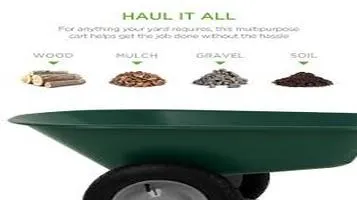The Enchanting World of Flowering Herbs: A Review
Flowering herbs are a diverse group of plants known for their aromatic properties and vibrant blooms. These plants are highly valued in gardens and landscapes for their dual purpose: they provide visual beauty and serve practical uses. Many flowering herbs, such as lavender, chamomile, and rosemary, produce delicate flowers that not only enhance aesthetic appeal but also attract pollinators like bees and butterflies. These plants often thrive in well-drained soil and sunny locations, making them relatively easy to cultivate. Beyond their ornamental value, flowering herbs are frequently used in culinary dishes, teas, and natural remedies, offering a rich tapestry of flavors and health benefits. Their versatility and charm make them a favorite among gardeners and herbalists alike.

Flowering herbs bring more than just a splash of color to gardens and landscapes; they offer a myriad of benefits that appeal to the senses, support ecosystems, and even enhance culinary and medicinal practices. As an avid gardener with years of experience, I have come to appreciate the unique blend of beauty and utility that flowering herbs provide. This review aims to shed light on the multifaceted nature of these plants, highlighting their aesthetic appeal, ecological benefits, and practical uses.
Aesthetic Appeal
One of the most striking aspects of flowering herbs is their ability to transform any garden into a vibrant tapestry of colors and textures. Herbs like lavender, rosemary, and thyme not only produce beautiful blooms but also emit enchanting fragrances that can uplift the spirit. Lavender's iconic purple flowers, for instance, create a calming ambiance and serve as a visual focal point in any garden setting. Similarly, the delicate white flowers of chamomile add a touch of elegance and serenity.
The diversity of flowering herbs ensures that there is something for every gardener's taste. For those who prefer bold colors, nasturtium and calendula offer bright orange and yellow blooms that can make any garden pop. On the other hand, if subtlety is more your style, herbs like basil and mint produce small, understated flowers that blend seamlessly with their lush green foliage.
Ecological Benefits
Flowering herbs are not just eye candy; they play a crucial role in supporting local ecosystems. Many of these plants are excellent attractors of pollinators such as bees, butterflies, and hummingbirds. For example, borage, with its star-shaped blue flowers, is a magnet for bees, which are essential for pollination and the overall health of the environment. By incorporating flowering herbs into your garden, you are contributing to the preservation of these vital pollinator populations.
Moreover, flowering herbs can act as natural pest repellents. Plants like marigold and rue produce compounds that deter harmful insects, thereby reducing the need for chemical pesticides. This not only makes your garden more eco-friendly but also promotes a healthier growing environment for other plants.
Culinary and Medicinal Uses
The utility of flowering herbs extends far beyond their beauty and ecological benefits. Many of these plants have culinary and medicinal applications that have been appreciated for centuries. Take basil, for example. Its flowers are edible and can be used to garnish dishes, adding both flavor and visual appeal. Nasturtium flowers are another culinary delight, known for their peppery taste that can spice up salads and soups.
In the realm of medicine, flowering herbs have long been revered for their healing properties. Chamomile flowers are well-known for their soothing effects and are commonly used in teas to alleviate stress and digestive issues. Lavender, another medicinal powerhouse, is often used in aromatherapy to promote relaxation and improve sleep quality. Echinacea, with its striking pink flowers, is widely used to boost the immune system and fend off colds.
Cultivation and Care
Growing flowering herbs is generally straightforward, making them an excellent choice for both novice and experienced gardeners. Most of these plants are hardy and can thrive in a variety of conditions. However, some basic care guidelines can help ensure their optimal growth.
Firstly, it's essential to choose the right location. Most flowering herbs prefer well-drained soil and ample sunlight. For instance, rosemary and lavender thrive in sunny spots with good air circulation. On the other hand, herbs like mint and chervil can tolerate partial shade and are more forgiving of less-than-ideal soil conditions.
Watering needs can vary among different types of flowering herbs. While drought-tolerant plants like thyme and sage require minimal watering, others like basil and parsley prefer consistently moist soil. Mulching can help regulate soil moisture and keep weeds at bay, further enhancing the growth of your herbs.
Pruning is another important aspect of herb care. Regularly trimming the plants encourages bushier growth and more prolific flowering. It also prevents the herbs from becoming leggy and helps maintain their overall health. Additionally, deadheading spent flowers can extend the blooming period, allowing you to enjoy their beauty for a longer time.
Conclusion
In conclusion, flowering herbs are a remarkable addition to any garden, offering a blend of aesthetic charm, ecological benefits, and practical uses. Their vibrant blooms and enchanting fragrances can transform any space into a sanctuary of beauty and tranquility. Moreover, by supporting pollinators and acting as natural pest repellents, these plants contribute to a healthier environment. Their culinary and medicinal applications further enhance their value, making them indispensable in both the kitchen and the medicine cabinet.
Whether you are a seasoned gardener or a beginner, flowering herbs are a rewarding choice that promises to enrich your gardening experience. With their diverse range of colors, scents, and benefits, these plants truly embody the essence of nature's bounty. So why not take the plunge and introduce some flowering herbs into your garden? You might just find that these humble plants have far more to offer than meets the eye.






